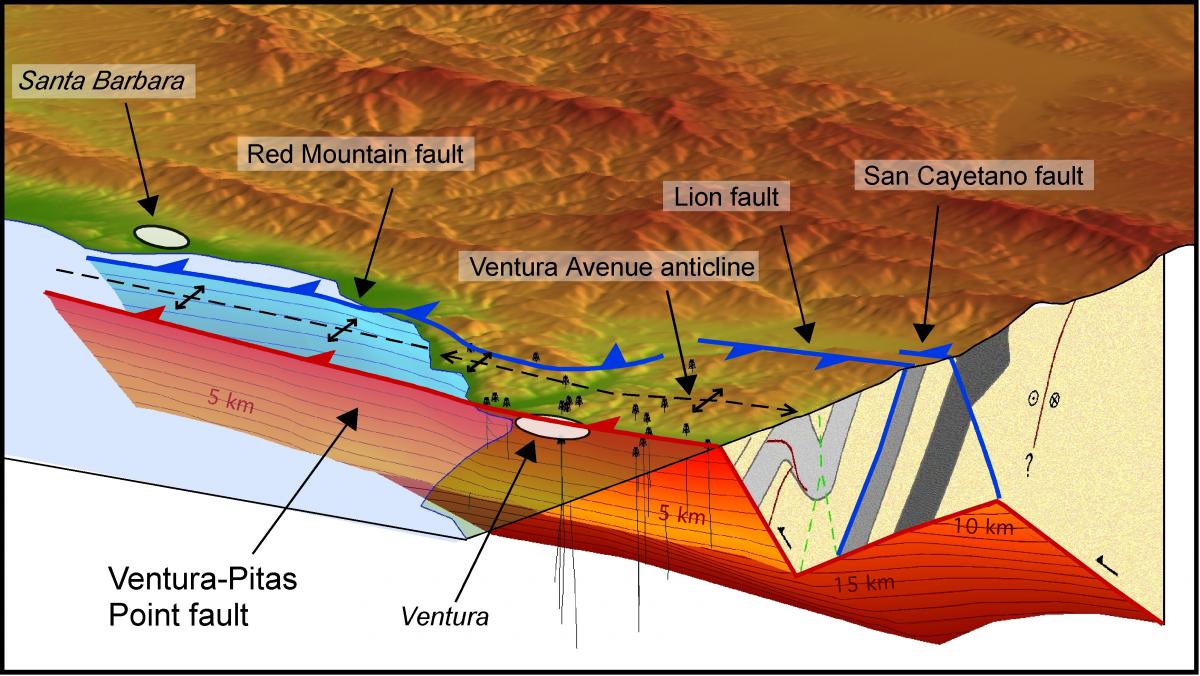Project Overview
 The Ventura Avenue anticline is one of the fastest uplifting structures in southern California, rising at ∼5 mm/yr (Rockwell et al., 1988). We use well data and seismic reflection profiles to show that the anticline is underlain by the Ventura fault, which extends to seismogenic depth. Fault displacement increases with depth, implying that the Ventura Avenue anticline is a fault-propagation fold. A decrease in the uplift rate at ~30±10 ka is consistent with a breakthrough of the Ventura fault at that time, and implies that the fault has a recent dip-slip rate of ~4.1-8.1 mm/yr.
The Ventura Avenue anticline is one of the fastest uplifting structures in southern California, rising at ∼5 mm/yr (Rockwell et al., 1988). We use well data and seismic reflection profiles to show that the anticline is underlain by the Ventura fault, which extends to seismogenic depth. Fault displacement increases with depth, implying that the Ventura Avenue anticline is a fault-propagation fold. A decrease in the uplift rate at ~30±10 ka is consistent with a breakthrough of the Ventura fault at that time, and implies that the fault has a recent dip-slip rate of ~4.1-8.1 mm/yr.
The Ventura fault and fold trend continues offshore as the Pitas Point fault, with an associated hanging wall anticline (e.g., Sarna-Wojcicki et al., 1976; Yerkes and Lee, 1987; Kamerling and Nicholson, 1995). The Ventura/Pitas Point fault appears to flatten to a detachment, called the Sisar Decollement (e.g., Huftile and Yeats, 1995), then step down on a blind thrust fault to the north. Other regional faults, including the San Cayetano and Red Mountain faults, link with this system at depth. We suggest that below 7.5 km bsl, these faults may form a nearly continuous surface.
Holocene terraces on the Ventura Avenue anticline suggest that it deforms in discrete events with 5-10 m of uplift, with the latest event occurring ~800 years ago (Rockwell, 2011). This much uplift would require large earthquakes (M7.7-8.1) involving the entire Ventura/Pitas Point system, and possibly more structures along strike such as the San Cayetano fault. Due to the local geography and geology, such events would be associated with significant groundshaking amplification and strong regional tsunamis.
Funding Sources
- Southern California Earthquake Center